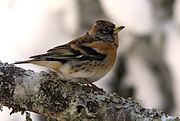Court Divisional Court Decided 5 April 1968 | Dates 19 Jul 1967 – 5 Apr 1968 | |
 | ||
Full case name Arthur Robert Partridge v. Anthony Ian Crittenden Citation(s) [1968] 1 WLR 1204; [1968] 2 All ER 421;(1968) 132 JP 367; (1968) 112 SJ 582 Cases cited Fisher v. Bell [1961] 1 QB 394; Grainger & Son v. Gough (Surveyor of Taxes) [1896] AC 325; Mella v. Monahan [1961] Crim. LR 175 (DC) Legislation cited Protection of Birds Act 1954 s. 6Protection of Birds Act 1957 Sch 4 Judge(s) sitting Lord Parker, CJ, Ashworth and Blain, JJ Similar Fisher v Bell, Pharmaceutical Society of GB v Boot, Carlill v Carbolic Smoke B, Hyde v Wrench, Gibson v Manchester City Coun | ||
Partridge v crittenden 1968
Partridge v Crittenden [1968] 1 WLR 1204 is an English case, which was heard by the Divisional Court of the Queen's Bench Division of the High Court of England and Wales on appeal from the Magistrates' Court and is well-known (amongst other cases) for establishing the legal precedent in English contract law, that usually advertisements are invitations to treat.
Contents
Facts
This case was a case stated by the Magistrates' Court sitting at the Castle in Chester on 19 July 1967.
On 13 April 1967 an advertisement by the appellant (Arthur Robert Partridge) appeared in the periodical "Cage and Aviary Birds", under the general heading "Classified Advertisements" which contained, amongst others, the words Quality British A.B.C.R... Bramblefinch cocks, Bramblefinch hens 25 s. each. In no place was there any direct use of the words "offer for sale". A Thomas Shaw Thompson wrote to Partridge asking him to send him an ABCR Bramblefinch hen (a brambling) and enclosed a cheque for 30s. On 1 May 1967 Partridge dispatched a brambling, which was wearing a closed-ring around its leg, to Thompson in a box. Thompson received the box on 2 May 1967 and was able to remove the ring from the bird's leg without injuring it.
Partridge was charged by Anthony Ian Crittenden, on behalf of the RSPCA, with illegally offering for sale a live wild bird which was not a close-ringed specimen, bred in captivity, against s. 6(1)* and Sch. 4* of the Protection of Birds Act 1954. The magistrates decided that the advertisement was an offer for sale and that the ABCR Bramblefinch hen was not a close-ringed specimen bred in captivity, because it was possible to remove the ring from the bird's leg.
Partridge was convicted, was fined £5 and ordered to pay £5 5 s. advocate's fee and £4 9 s. 6 d. witnesses' expenses.
Partridge appealed against conviction.
Judgment
The High Court had to answer whether the appellant's advertisement constituted a legitimate offer for sale, and whether the bird was not a close-ringed specimen bred in captivity under the Protection of Birds Act 1954 if it were possible to remove the ring from its leg. It was held that the advertisement in question constituted in law an invitation to treat and not an offer to sell; therefore the offence with which the appellant was charged was not established. The judges also said that if the only issue were whether the bird was a close-ringed specimen under the Protection of Birds Act 1954, the magistrates' judgment would have been upheld. Ashworth J gave his judgment first.
Lord Parker CJ said the following.
Blain J concurred.
Significance
From s 6(1) of the Protection of Birds Act 1954: "If... any person sells, offers for sale... (a) any live wild bird... including in Sch. 4 to this Act of a species which is resident in or visits the British Isles in a wild state, other than a close-ringed specimen bred in captivity;... he shall be guilty of an offence..." Sch 4 of the Protection of Birds Act 1954 has the heading: "Wild birds which may not be sold alive unless close-ringed and bred in captivity" and amongst the names in the schedule is "brambling".
